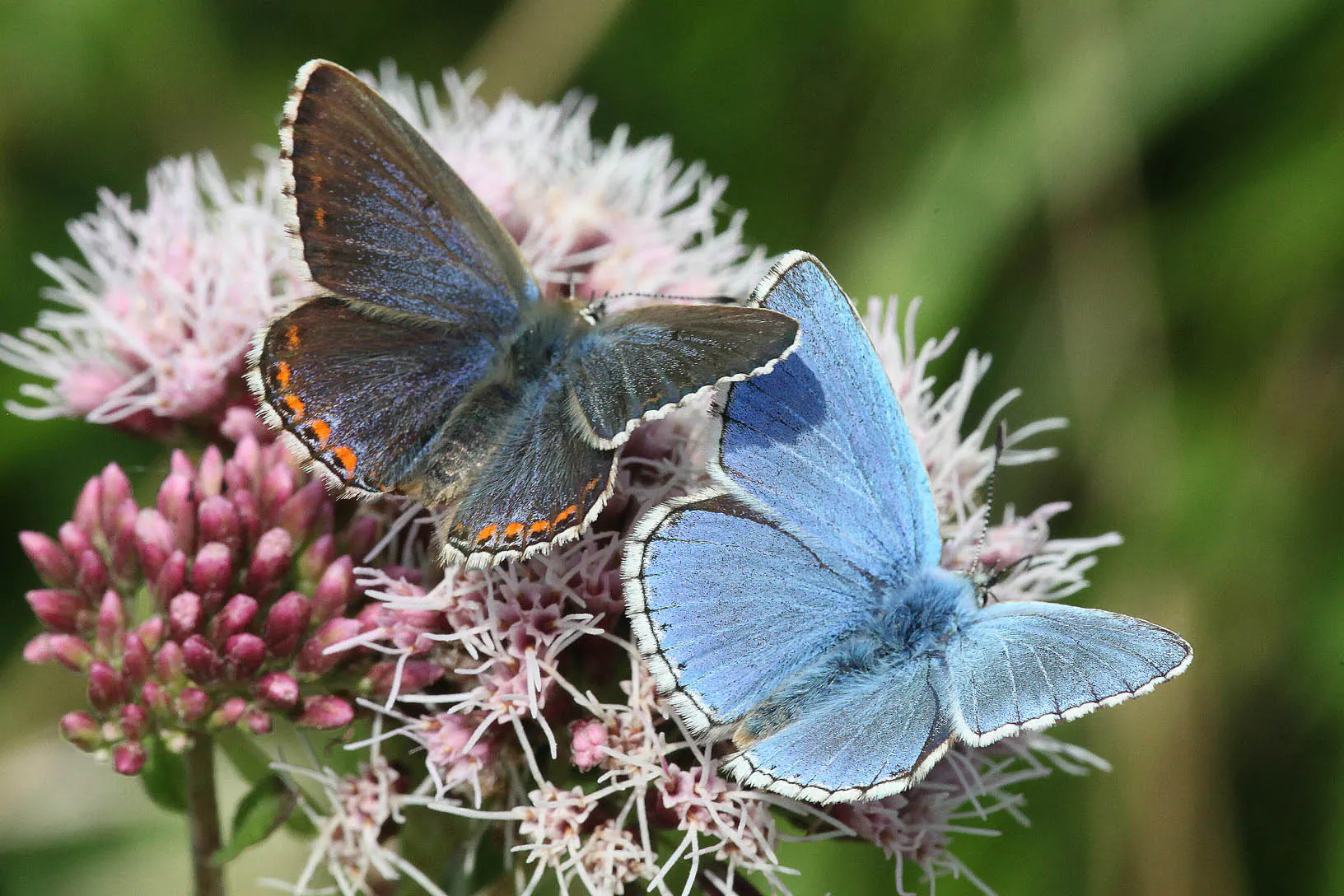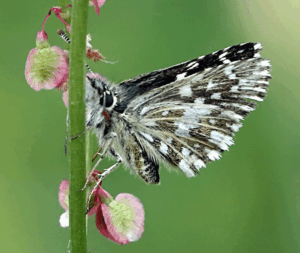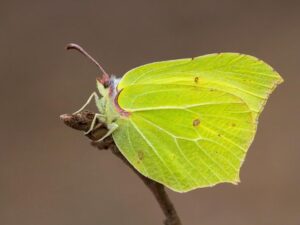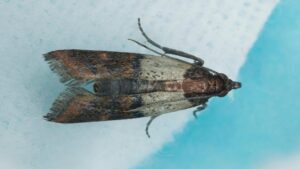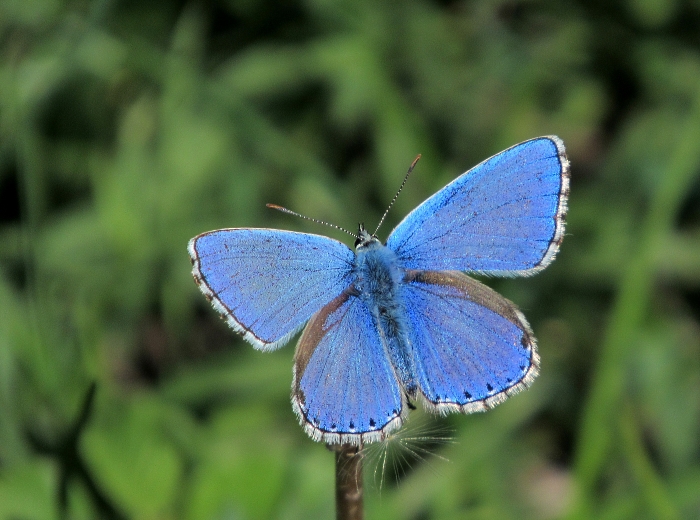
Size and Family
- Family: Blues
- Size: Small/Medium
- Wing Span Range (male to female): 38mm
Conservation Status
- UK BAP: Not listed (formerly Priority)
- Butterfly Conservation priority: Medium
- European status: Not threatened
- Protected under Schedule 5 of the 1981 Wildlife and Countryside Act (for sale only)
Adonis Blue Habitat
The preferred habitat of the Adonis blue is calcareous grasslands with hot and dry conditions. This is because the larva feeds on horseshoe vetch (Hippocrepis comosa) which is largely restricted to these habitats. This plant flourishes on sheep-grazed pastures and disappears after a few years when cattle graze. Sometimes human-created landforms provide refuges for the plant and the butterfly; an example of this is on Martin Down in Dorset, where horseshoe vetch only occurs on ancient earthworks with thin calcareous soils.
How people can help
The Wildlife Trusts manage many grassland habitats sympathetically for the benefit of all kinds of butterflies, including the Adonis blue. Careful grazing with traditional breeds, hay-cutting at the right time and scrub clearance are just some of the ways grasslands are kept in good condition – supporting invertebrates and, in turn, the larger animals that prey on them. By volunteering for your local Trust you can help too, and you’ll make new friends and learn new skills along the way.
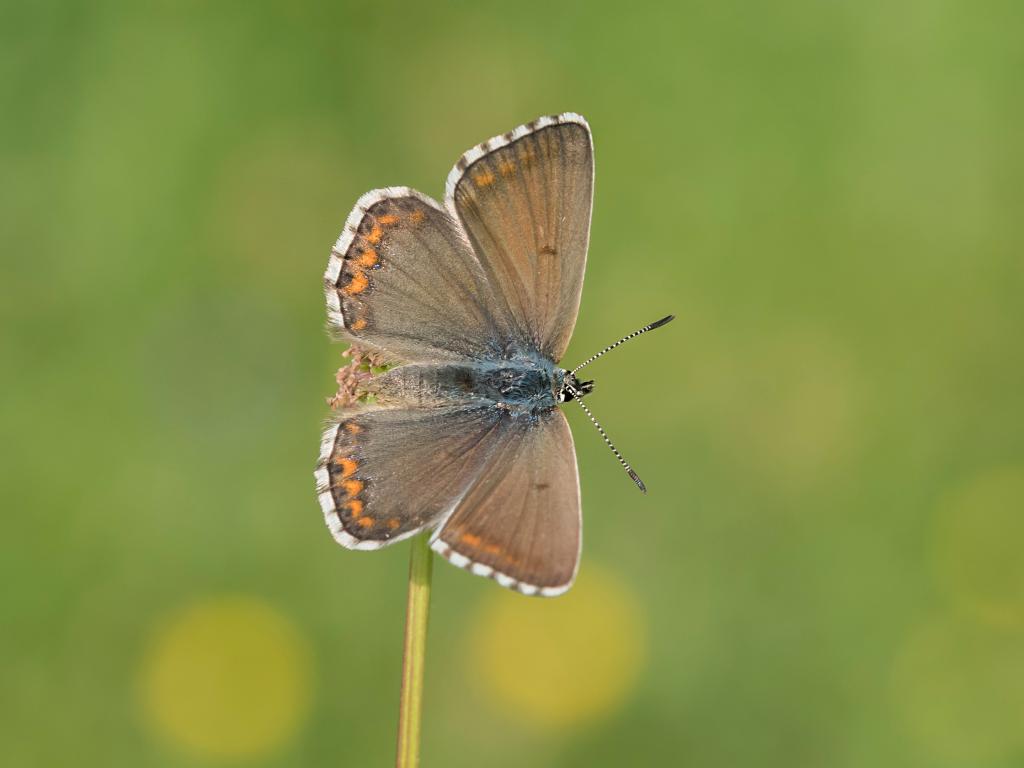
adonis blue butterfly life cycle
The Adonis blue butterfly (Lysandra bellargus) has a life cycle that includes two generations per year, with adults flying in the spring and fall:
Eggs
In May or June and August or September, the female butterfly lays eggs singly on small food plants growing in short turf. The warm microclimate created by the short turf and unshaded leaves favors the ants that tend to the larvae and pupae.
Larvae
The green caterpillars are well camouflaged by their short yellow stripes and feed on the horseshoe vetch (Hippocrepis comosa) during the day. Ants are attracted to the larvae’s secretions from special “honey” glands and pores, and in exchange, the ants protect the larvae from predators and parasites.
Chrysalis
In April or May and July or August, the caterpillars form chrysalises in small crevices or hollows. The ants then bury the chrysalises in earth chambers connected to their nest, where they continue to tend to them for about three weeks.
Adults
The first adult butterflies emerge in the second half of May, peaking at the end of May and beginning of June. The second brood emerges in the second half of August, peaking at the end of August and beginning of September. Male Adonis blues have vivid turquoise upper wings with black lines and a white fringe, while females are brown with blue scales and orange wing edges.
This beautiful species of butterfly is one of the most characteristic of unimproved southern chalk downland, where it can be seen flying low over shortly grazed turf (typically steep, south-facing slopes).
The males have brilliant sky-blue wings, while the females are chocolate brown and far less conspicuous. Both sexes have distinctive black lines that enter or cross the white fringes of the wings.
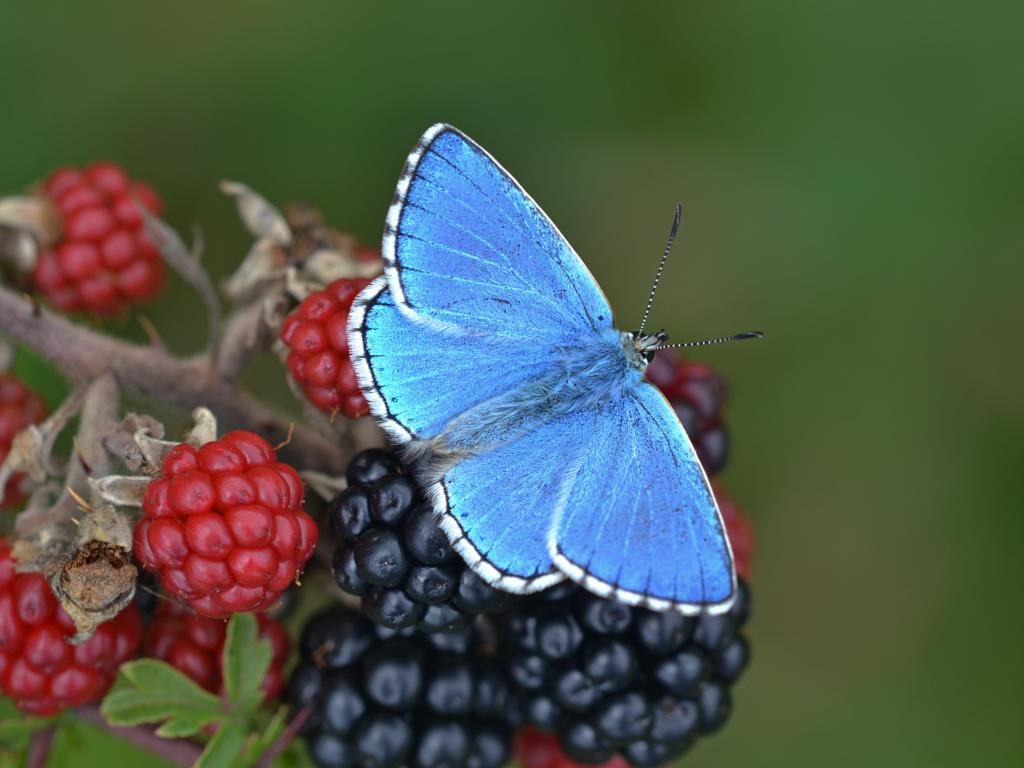
The white, textured disc-shaped eggs are laid singly under young, unshaded Horseshoe Vetch leaves in May-June and August-September. They can be found most easily in September where unshaded Horseshoe Vetch is growing on short turf.
The Adonis Blue overwinters as a caterpillar; it is is green with short, yellow stripes, which camouflage it while it feeds on Horseshoe Vetch during the day. It is most commonly seen during April and late July as it searches for ants to ‘milk’ its sugary secretions.
In April-May and July-August the caterpillar forms into a chrysalis in small crevices or hollows and is then buried by ants in earth chambers connected to the ant nest. The ants constantly attend to it for around three weeks, protecting it from predators.
This species has undergone a major decline through its entire range but, despite its restricted distribution, on good sites it can be seen in many hundreds, as it has recently re-expanded in some regions.
Colonies vary in size considerably from year to year, depending on the weather. Many thousands can be seen emerging towards the end of a hot summer, constrasting with under a hundred from a spring emergence.
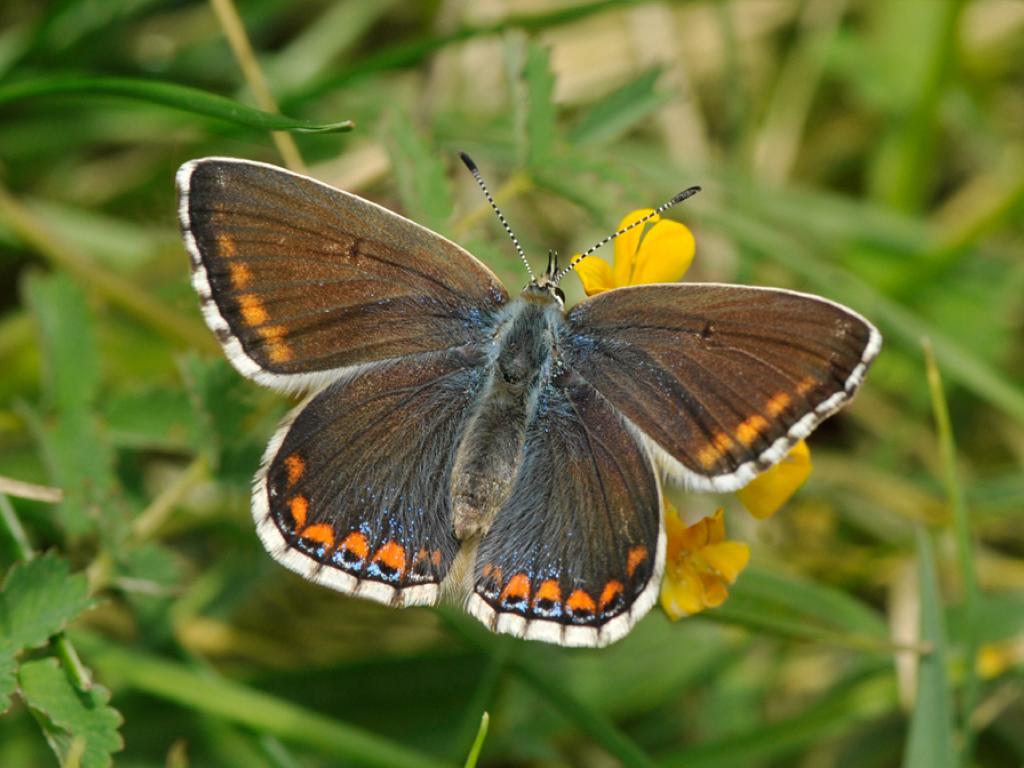
The Adonis Blue is a species of chalk downland, where it may be found in warm, sheltered spots. The male Adonis Blue has brilliantly-coloured blue wings that gives this butterfly its name, and can be found flying low over vegetation, seeking out the less-conspicuous females that are a rich chocolate brown in colour. Like its close relative, the Chalk Hill Blue, the distribution of this species follows the distribution of Horseshoe Vetch which, in turn, follows the distribution of chalk and limestone grassland. However, this species has a more restricted distribution than the Chalk Hill Blue, indicating more precise habitat requirements. This butterfly can be found in large numbers where it does occur, such as the chalk downloads of Dorset, South Wiltshire, West Sussex, East Sussex and East Kent. This species is absent from central England, northern England, Wales, Scotland, Ireland, the Isle of Man and the Channel Islands. This species lives in discrete colonies.
Adonis Blue Facts
The rarest blue butterfly in the UK, this endangered species has recently recolonized areas of the Cotswold where it had been considered extinct for over 40 years. From May to September, this species can be found on sunny, south-facing grassland rich in herbs, where they search for their solitary food source, horseshoe vetch.
The males are a vivid sky-clue with fine black lines around the perimeter of their wings, which gives way to a delicate white fringe. Females of the species are much less vibrant, predominantly appearing brown, although some variation has been seen.
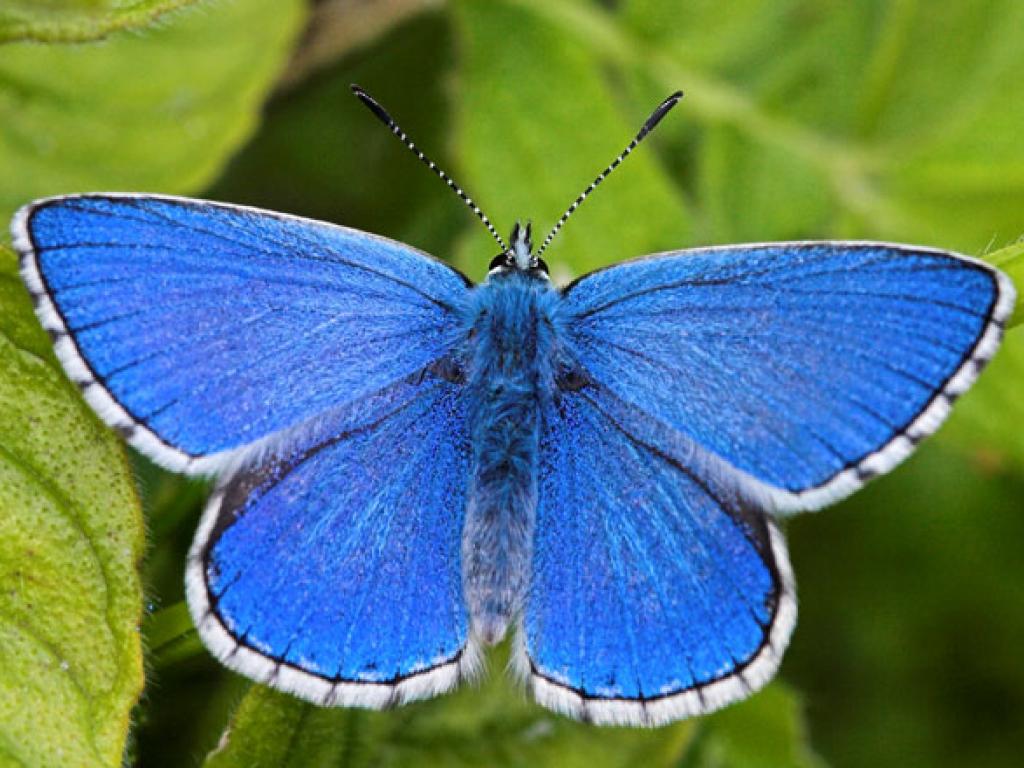
The lifecycle of the Adonis blue features a fascinating symbiotic relationship with ants. There are two broods a year, in the spring and fall, which find eggs laid on small plants in short turf. This creates a warm microclimate and easy access for the ants, which tend to the larvae, protecting them from predators and parasites in exchange for the secretions from special ‘honey’ glands. This remarkable relationship often continues through the pupal stage, when adults will finally emerge from the ant colonies in which they have been incubated.
The decline of the Adonis blue was attributed to a loss of suitable habitat, particularly during the production of the second generation in late fall. There has been a marked effort to improve awareness around maintaining suitable habitat, and many conservation groups are working directly with farmers to manage pasture in a way that creates suitable habitat for this rare species.

